The Kimera EVO37 Does the Impossible
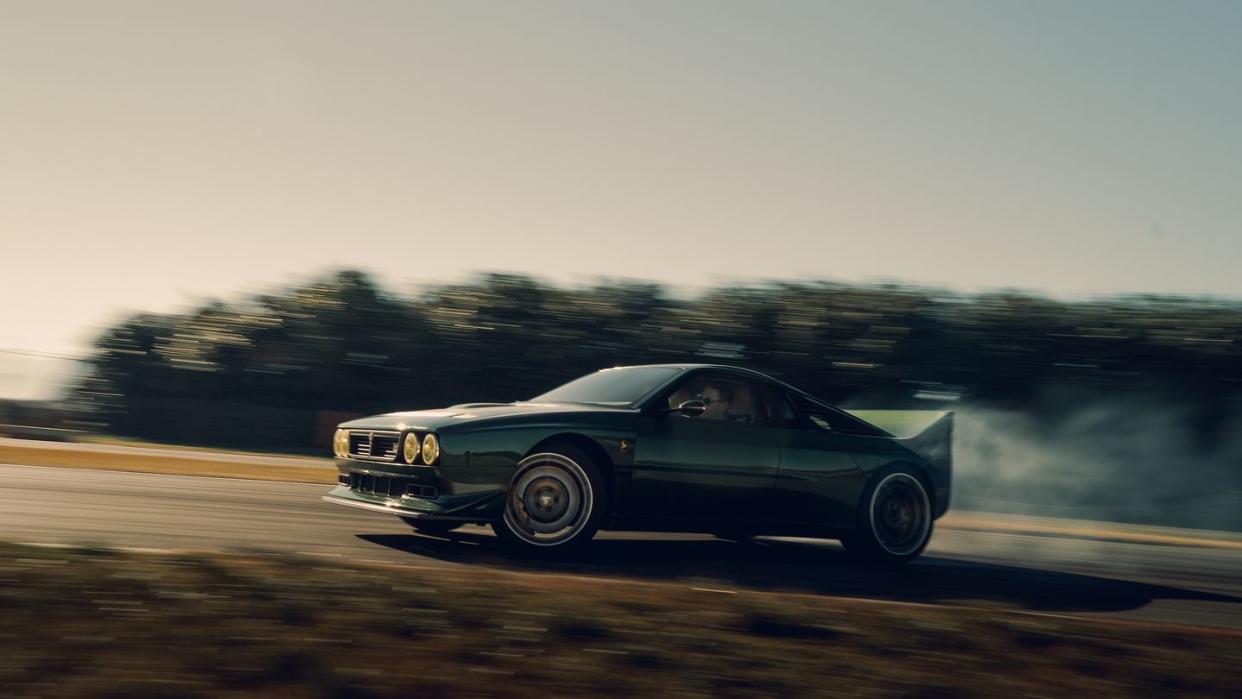
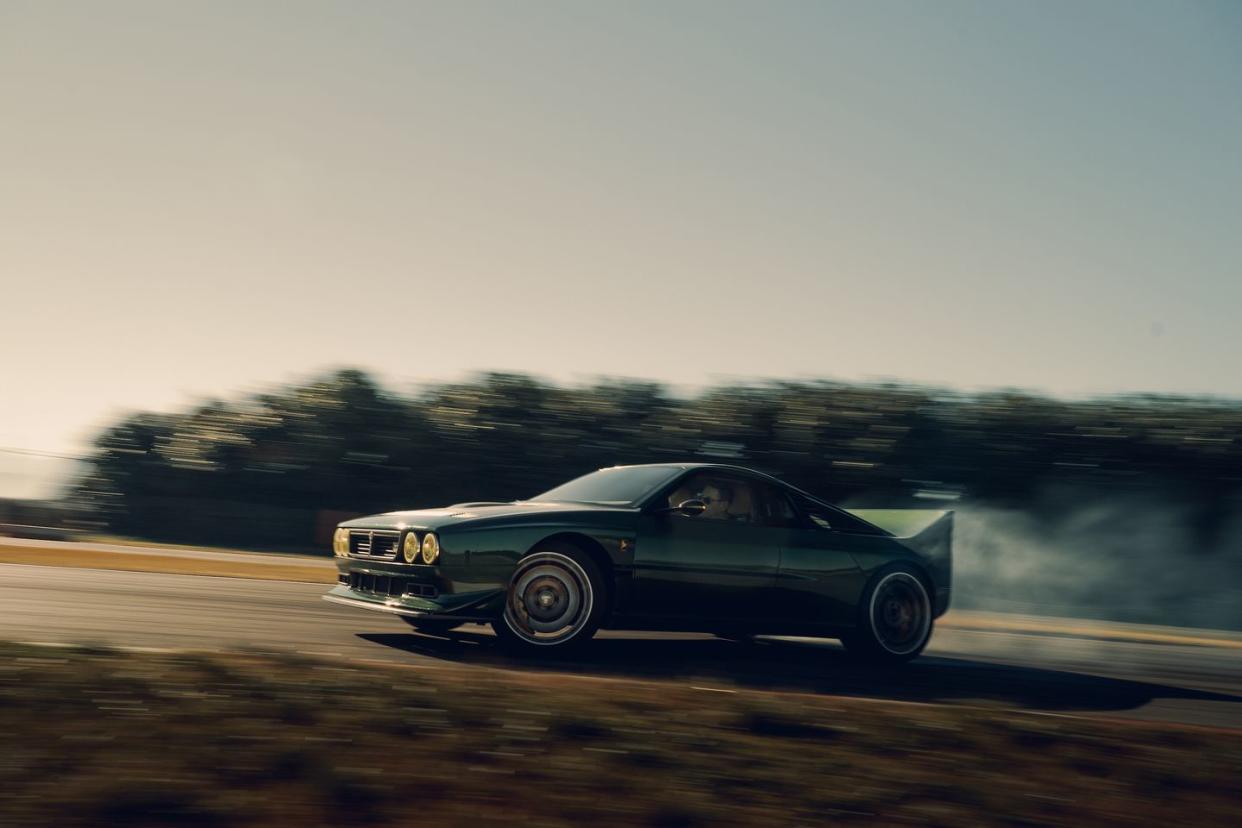
It’s an impossible story. Against the brutal effectiveness of the seemingly invincible Audi Quattro, a delicate rear-drive mid-engine rally car stood fast. It could barely be more evocative. Developed and produced by Abarth in collaboration with Pininfarina and Dallara, the Lancia 037 was a Kevlar-clad dream and a true successor to the legendary Lancia Stratos. The 037 was light, nimble, and piloted by some of the world’s greatest drivers. Lancia used ingenuity, agility, and some wonderfully underhanded tactics to uphold Italy’s honor against Germany’s emerging rallying superpower.
This story originally appeared in Volume 22 of Road & Track.
It’s 1983, and Group B is just beginning its journey toward delivering the most technologically advanced and terrifying rally cars the world has ever seen. Despite Walter Röhrl’s heroics with Opel in ’82 that earned him the world drivers’ title, Audi’s new four-wheel-drive sensation claimed the constructors’ title in its debut season. It won seven of 12 rallies, and the writing was on the wall. Four-wheel drive was going to be the only game in town from here on out—especially as the loosely written Group B regulations would see power outputs escalate at an alarming rate in coming seasons.
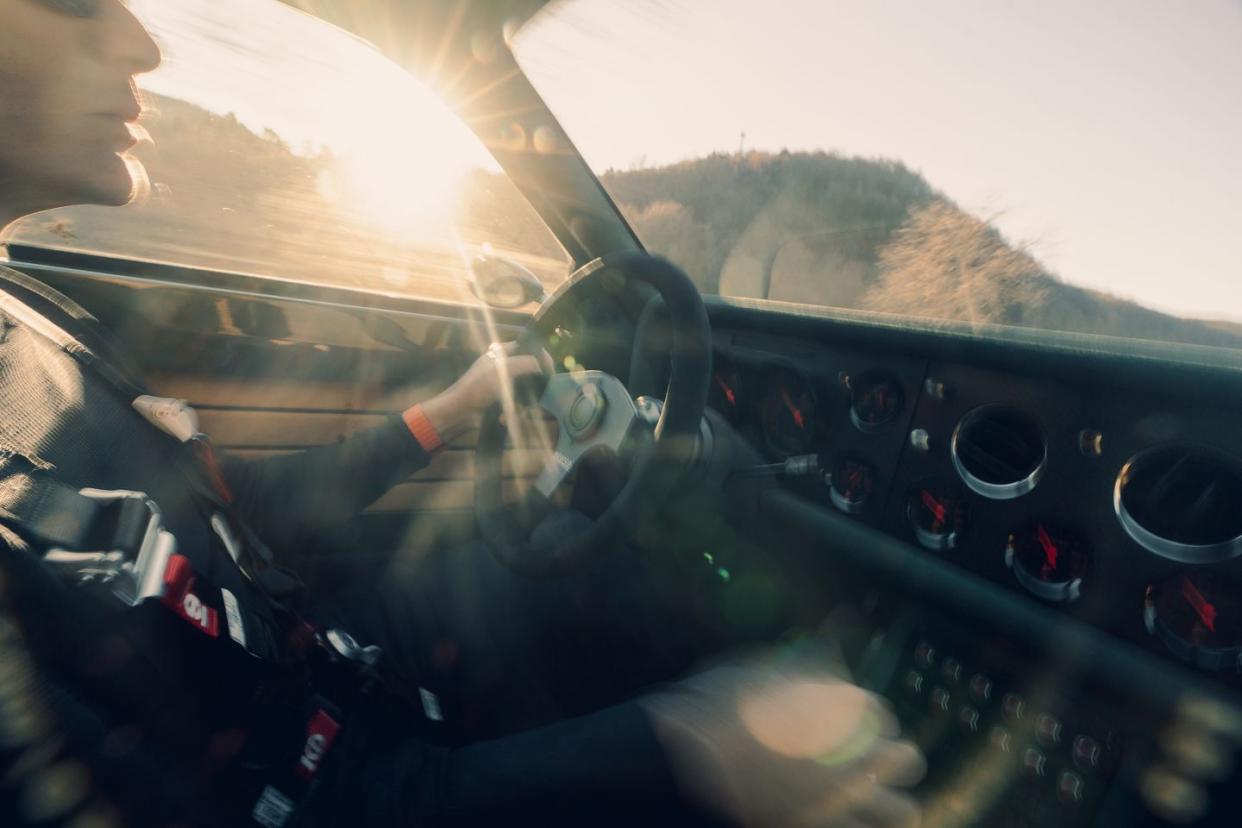
Lancia, however, went its own way, at least for a while. And in 1983, against all odds, the 037 delivered the constructors’ title by just two points. It would be the last rear-drive car to achieve this accolade and hold back the tidal wave of four-wheel drive. This is a long way of saying that Lancia’s gorgeous 037 earned its place on the list of the 20 Greatest Cars We’ve Ever Driven in the hardest way imaginable: through mud, gravel, snow, and ice, and pursued by the blunt nose and blistered arches of the mighty Quattro.
e’re in Cuneo, in northwest Italy. Turin, home of Lancia and Abarth, is about an hour north. To the west are the cols that climb all over the Maritime Alps, the roads where the 037 claimed one of its most famous victories at the controversial, scene-setting Monte Carlo rally, the first round of the 1983 championship. But we’re not here to drive an 037. Not quite. We’re visiting Kimera Automobili, a tiny manufacturer drawing knowledge and motorsport experience from all over this region, and the company’s gorgeous and deeply intriguing Evo37. Inspired by the 037—evolved with later learnings from Lancia’s incredible success in Group B and built with obsessive attention to detail, high-quality components, and wide-eyed passion—this creation might fall under the “restomod” umbrella. But it’s so much more.
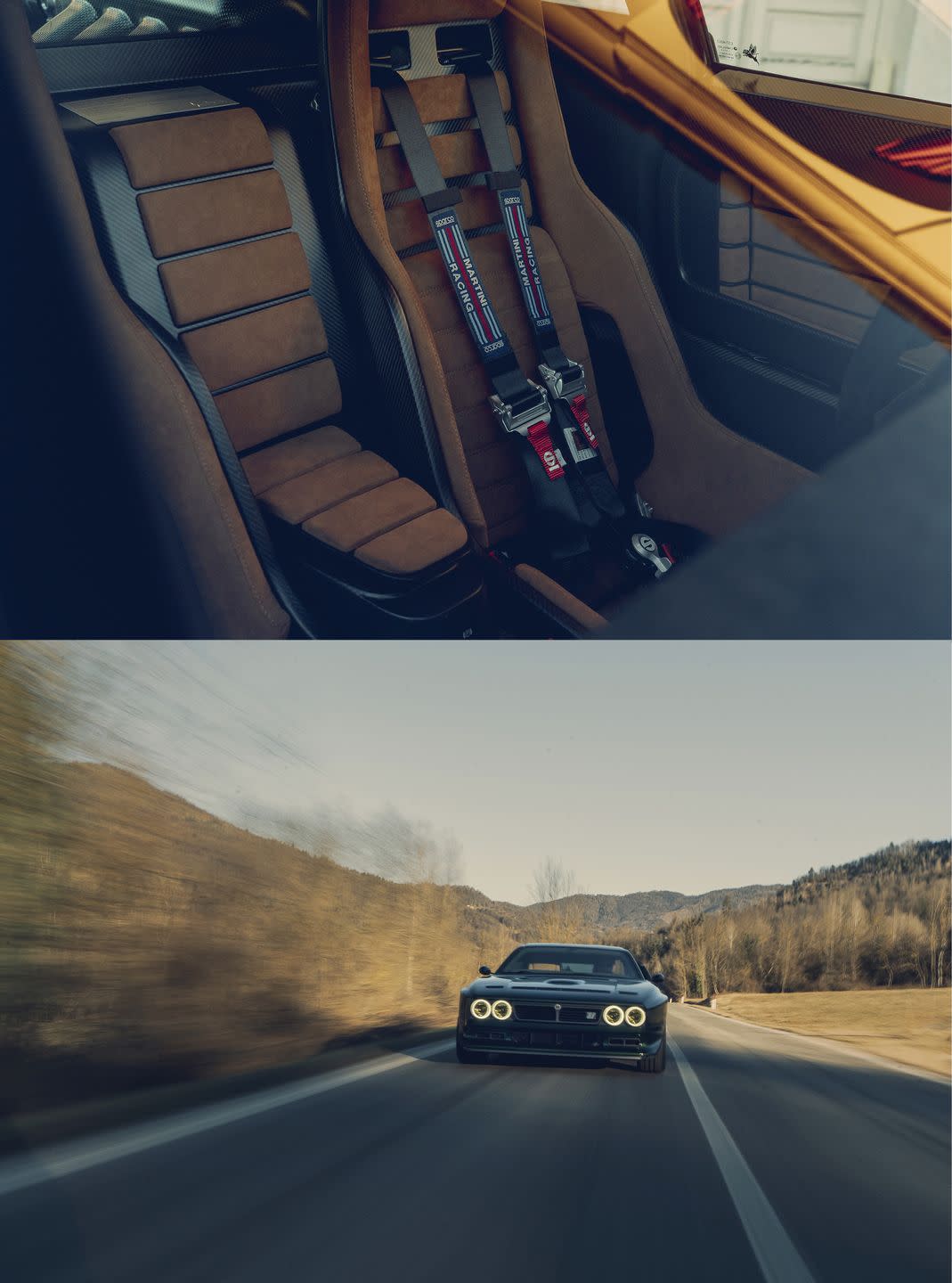
The Kimera project is the brainchild, or maybe heartchild, of Luca Betti, a former rally driver and proud citizen of this region. “I am from Piedmont,” he says. “And even if people think that Emilia-Romagna [home of Modena] is the motor land of Italy, really Torino is the very heart of our industry. For the Piedmontese, our Ferrari was Lancia. In the Eighties, my father, everyone, was very proud of the rally success. It was a mythical brand. Those Martini Racing cars were something magical and inspired my life.”
Betti’s rally-driving career spanned 15 years before he retired from competition and established an automobile-restoration business. The first car he was charged with bringing back to life was the most iconic of all Group B machines and the even more radical successor to the 037, the Lancia Delta S4. This strange-looking four-wheel-drive hatchback was stuffed with a mid-mounted supercharged and turbocharged 1.8-liter four-cylinder that produced a claimed 480 hp, although many said it was closer to 600. It competed in the WRC in ’85 and ’86 and ultimately killed perhaps the only driver who could tame it at the time. Henri Toivonen, along with his co-driver, Sergio Cresto, succumbed to the S4 on the Tour de Corse in a tragic and violent accident. Group B was killed that day too. The category had simply spun out of control. For Betti—the lifelong fan steeped in the tradition of Lancia—taking on this project was an honor and provided invaluable experience and contacts for an idea already cooking in his mind.
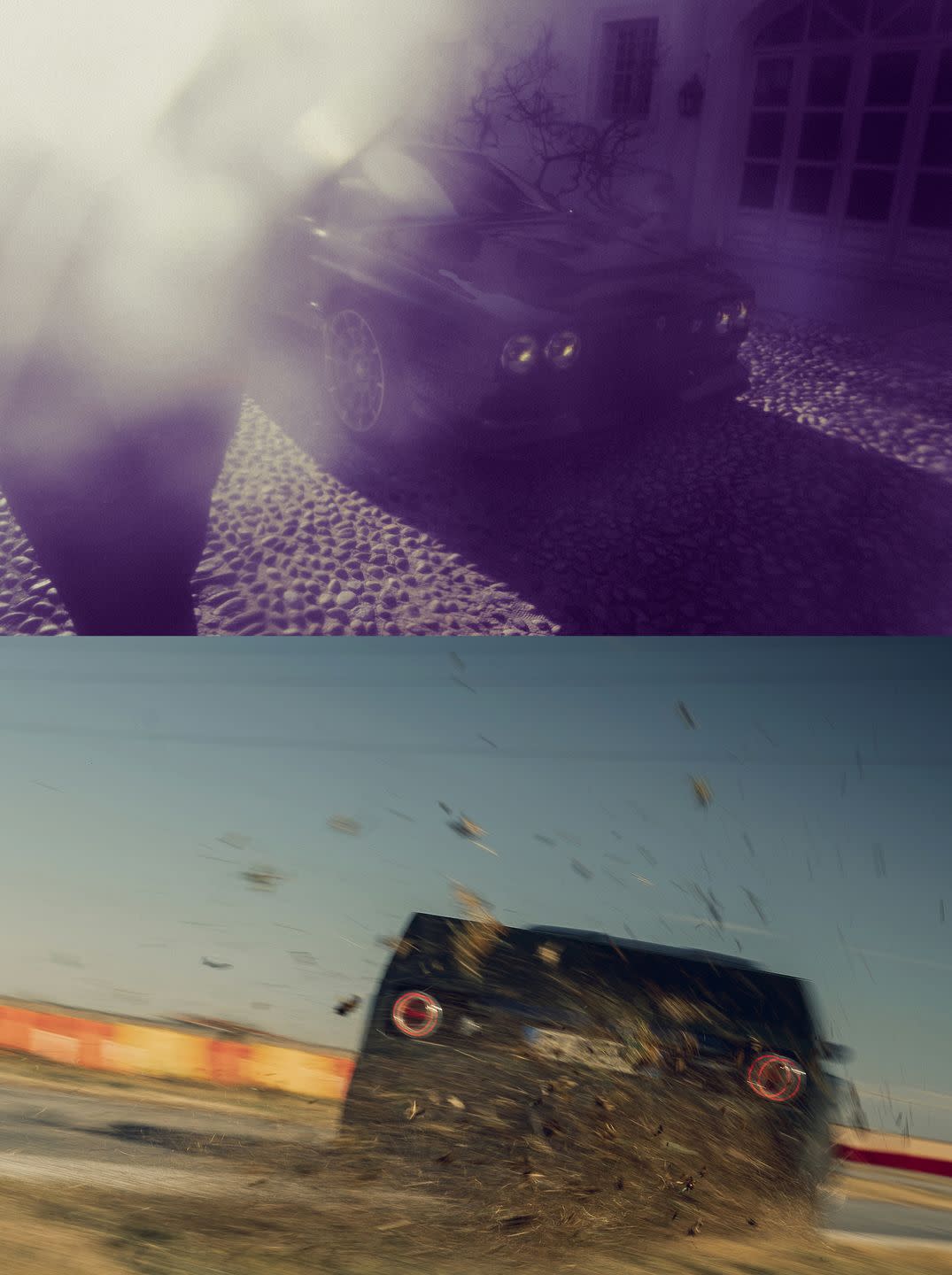
“Motorsport is so exciting and fast-paced,” Betti explains. “I wanted that adrenaline back. So I say, ‘Okay, let’s make a tribute to a great era of Lancia.’ For me, the most beautiful of this Martini Racing era was the first. The mother of them all. The car that permitted this history to be written.” He’s talking about the 037, of course. “Plus, it has that great story of Italy versus Germany—style, creativity, craziness, and then Germany is the opposite,” Betti continues. “In many ways, the 037 is the archetypal Italian car. It’s a genius car, but in the past, it was full of problems.” He breaks into a smile, and we both understand exactly what he’s talking about. “So, I try to apply new technology, new materials to make the perfect car and the perfect tribute to that era.”
The resultant Kimera Evo37—all $700,000-plus of it—is stunning. Just like the original 037 Stradale, of which only 200 were built to satisfy Group B homologation, the Kimera uses the passenger cell of the humble Lancia Scorpion (Montecarlo in the rest of the world), with unique subframes front and rear for the double-wishbone suspension, longitudinally mounted engine, and gearbox. At the rear, just as in period, are twin damper units per side. The rally-car vibes are strong. Kimera uses adjustable Öhlins dampers, the subframes are much stronger, and the Evo37 rides on 18-inch wheels at the front and 19s at the rear, with Pirelli tires instead of the 037 Stradale’s more modest 16s. The body, though inspired by the 037, is cleaner, more exaggerated, and beautifully wrought in carbon fiber. Even “Esmeralda,” a preproduction prototype in British Racing Green that’s been used and abused, is a wondrous thing to behold. We’ll also get to try “Natalia,” a new customer car fresh from the factory, to see how things have moved along.
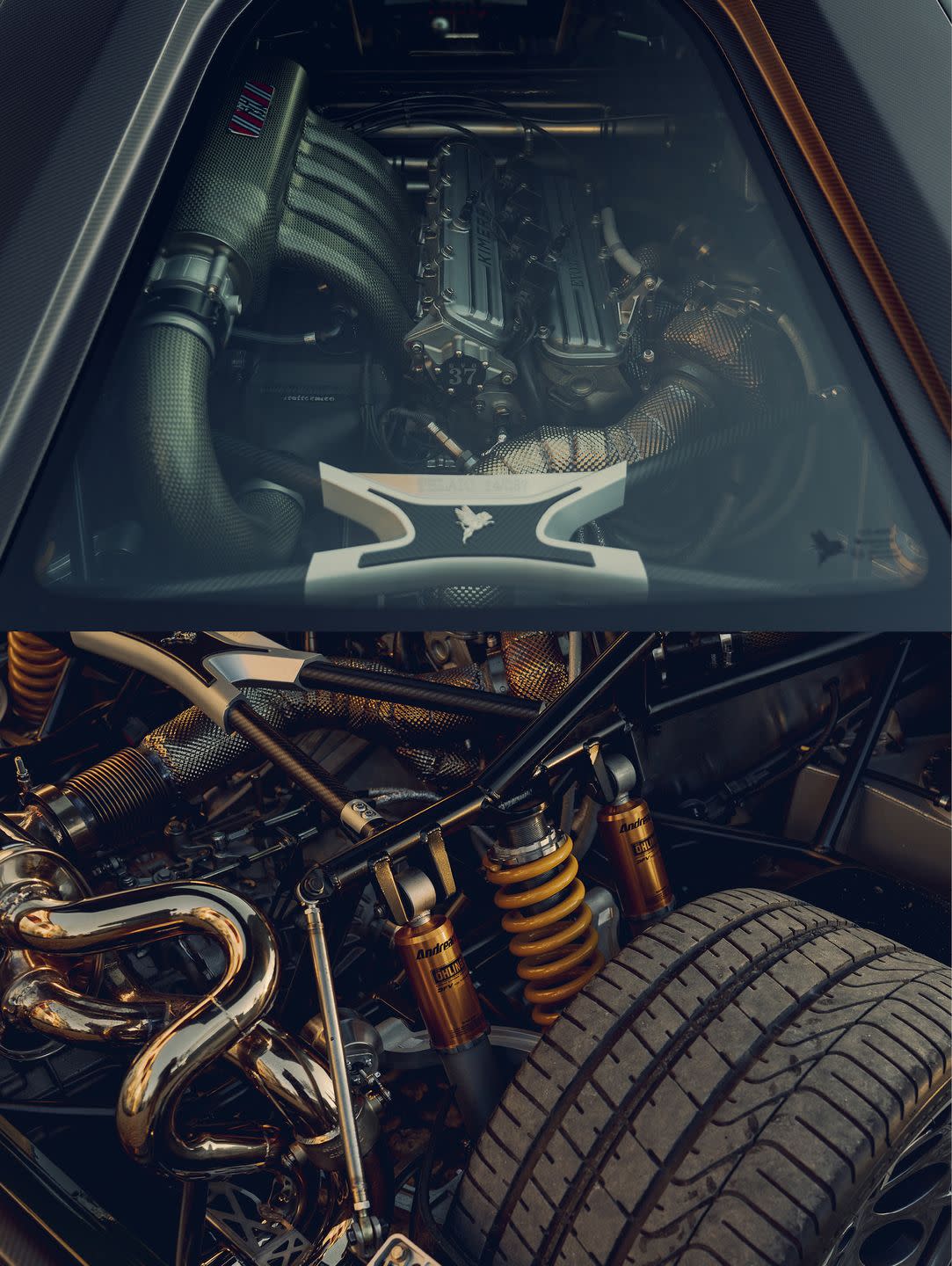
Betti’s background gives substance to Kimera and its update of the 037 formula. However, the ties with Lancia also run deep in the development team. The engine, for example, was developed under the watchful eye of Claudio Lombardi, former head of engineering at Lancia and then team manager of Ferrari F1. This is where the Kimera gets really interesting. Instead of simply copying the supercharged 2.1-liter engine of the 037, the new car benefits from later Group B technology pioneered by Lancia with the wild Delta S4. So, the new engine—its block machined from billet—employs a supercharger for low-rev response before transitioning to turbocharging at high engine speeds. This eliminates lag and allows for a big turbocharger with high boost pressure and plenty of top-end power. Cleverly, once the turbo takes over, the supercharger decouples from the engine via an electric clutch to eliminate the parasitic losses usually associated with such systems.
The Evo37 is less a restomod and more a car born of an alternate reality. Imagine that Lancia had persisted with rear-wheel drive for its rally campaign and deployed new material technologies and engineering solutions to the 037 platform to keep up with the rapidly escalating arms race of Group B. The result might have been something very close to this amazing creation. Hence, the badge on its rear reading “Autentica evoluzione.” Betti owns an S4 and a competition-spec 037 (of course he does). “This car,” he says, “really brings the true feeling of Group B to the road.” Esmeralda has two engine-control maps, one with around 350 hp, the other with 450 hp, and the production cars have a third map that delivers over 500 hp. The Evo37 weighs 2376 pounds. After seeing several in various colors awaiting collection and hearing about how the car came to be, I am positively salivating, ready to be immersed in the maddest, baddest rally-car era ever. Just maybe without the fiery-death part.

One benefit of using Scorpion donor cars is that the Kimera remains incredibly compact. It’s too handsome to be toylike, but the car isn’t much longer than a Miata, and although it’s wider, it’s also lower than Mazda’s little sports car. Yet this tiny footprint packs so much intent and drama. Talk about charisma.
Betti is a tall guy, but when he drops down over the high carbon-fiber reinforcement for the central tub and into a slim seat, it’s clear the Kimera is not built for those of NFL proportions. I instinctively go to slide the seat back on its runners, but it’s already out of travel. Thankfully, the production cars have greatly improved this issue. Even so, the slight build of the Kimera is evident and fitting. This car might be radically reengineered, but its roots remain firmly in Lancia’s motorsport glory years.
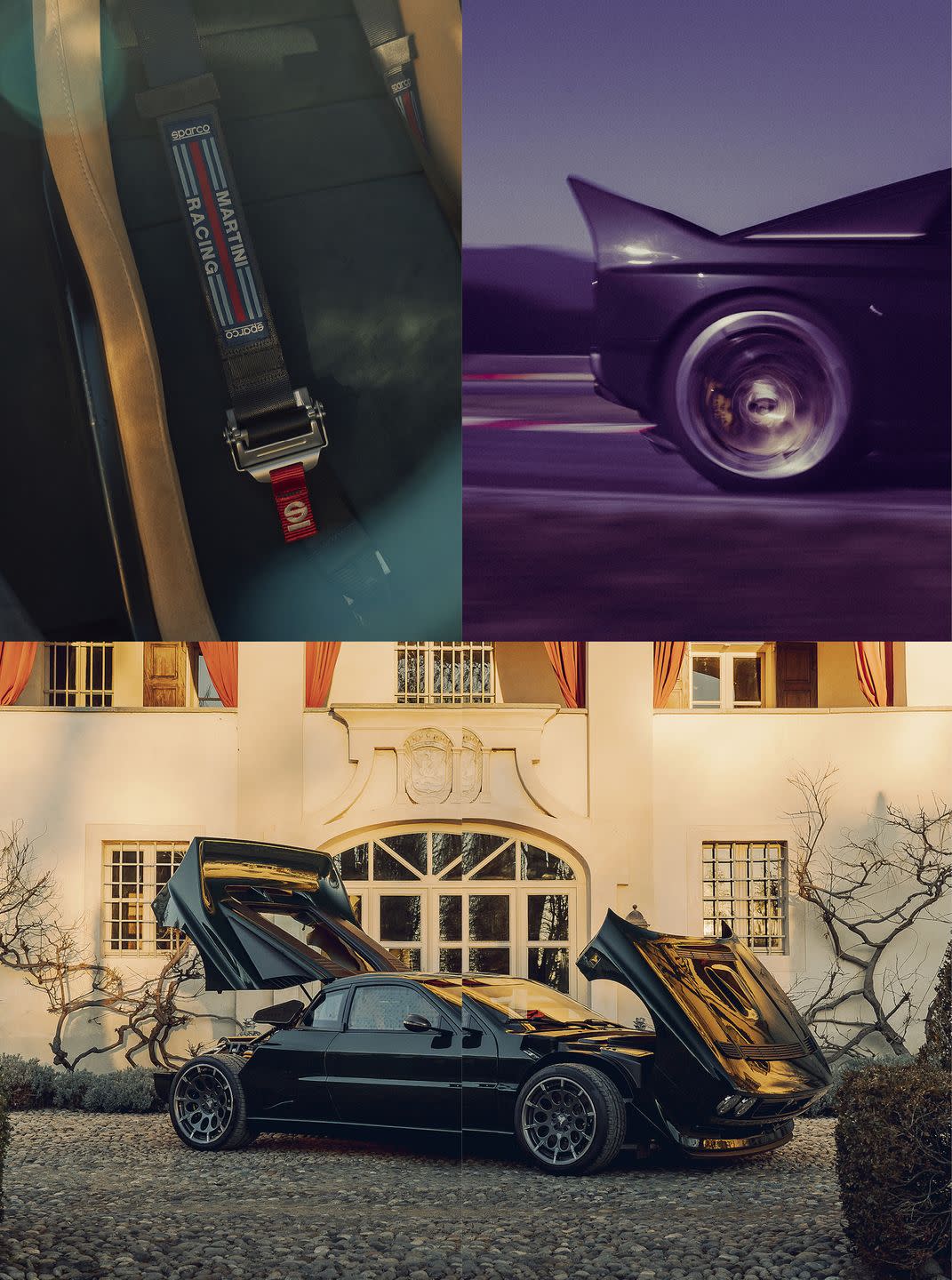
There’s theater from the very first moment. Turn the motorsport-style kill switch on the center console to power up the car. Next, flick the ignition switch, on the end of a small triangular raised section just ahead of the main switch, and hear the fuel system prime. Finally, squeeze two starter buttons on either side of the triangular structure with thumb and index finger. If the ritual doesn’t already feel rally enough for you, then the shattering, coarse, gargling, whining noise from the twin-charged engine will. How can so much noise and energy spew from just 2.1 liters of displacement? I’ve never heard anything quite like it.
First impressions are of sensation. So much sensation. The six-speed Graziano manual gearbox is shared with the Audi R8 and Lamborghini Gallardo and feels familiar and brilliant. Weighty but smooth and with a lovely sharpness. The steering is relatively light, speaking to the car’s low mass, but it’s not overly quick or jumpy, imparting a sense of confidence. That’s partly because there’s real precision here. For me, the palpable rigidity of the chassis is a surprise. Usually, old cars just can’t match the integrity of newer ones, and that has a knock-on effect for damping and steering response. Not here. The Evo37 is taut and controlled, but Betti’s words are ringing in my ears: “It has the philosophy of a rally car, not a racing car. Its character and feel are completely different.” There’s movement in the car, weight transfer that you can feel and, I suspect, use to good effect. It feels alive.
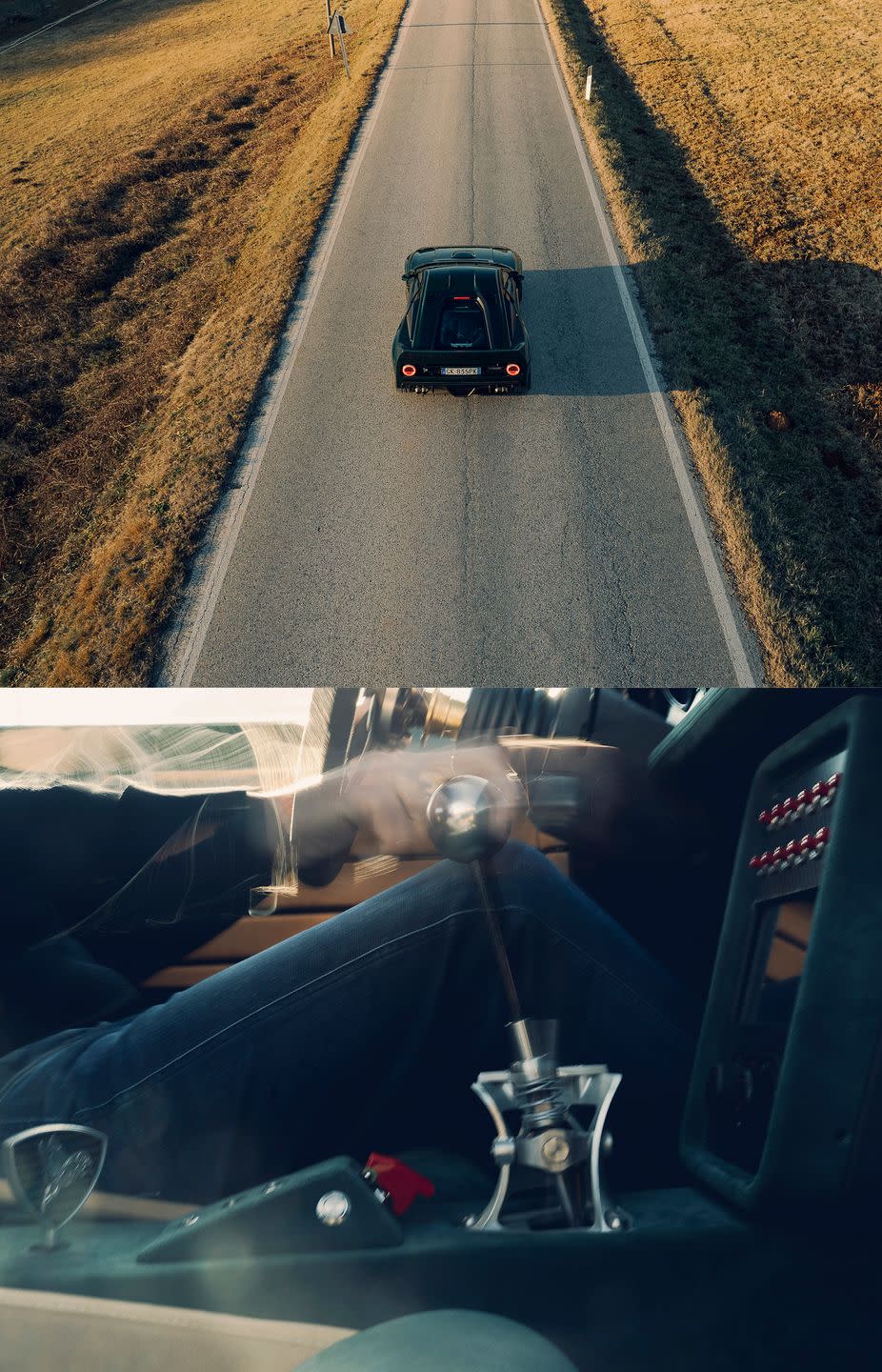
The engine is a huge part of this almost organic feeling. To call it the heart of the Kimera would be an understatement. The unique four-cylinder infects and inhabits every fiber of this intense machine. As expected of an inline four-cylinder, there’s not a hint of musicality. But the raucous thrash, combined with the supercharger’s whine and the hisses, sighs, whistles, and chirps of the turbocharger, creates a feral, ever-changing soundscape. There’s a hint of F40, but somehow, this small-displacement engine is even ruder and more intriguing. Its power delivery is unique too. The heavily boosted rush to the limiter—set at 7800 rpm—is wild, but the low-rev response from the supercharger means you’re never waiting for the engine to come to life or driving around a big spike in torque.
The Evo37 is a car of contrasts and the strangest mix of old and new I’ve ever experienced. In fact, it wrong-foots you at every turn. It’s so gorgeous, it renders every scene into some sort of AI-generated future fantasy. A tantalizing dream. Dynamically, it feels incredibly current in terms of its cohesive, precise damping and the poise and control it exhibits over any surface. Yet the deep and tactile connection to every control is a throwback to earlier times. The cocktail of the future, the here and now, and the long-lost analog thrill is head spinning.
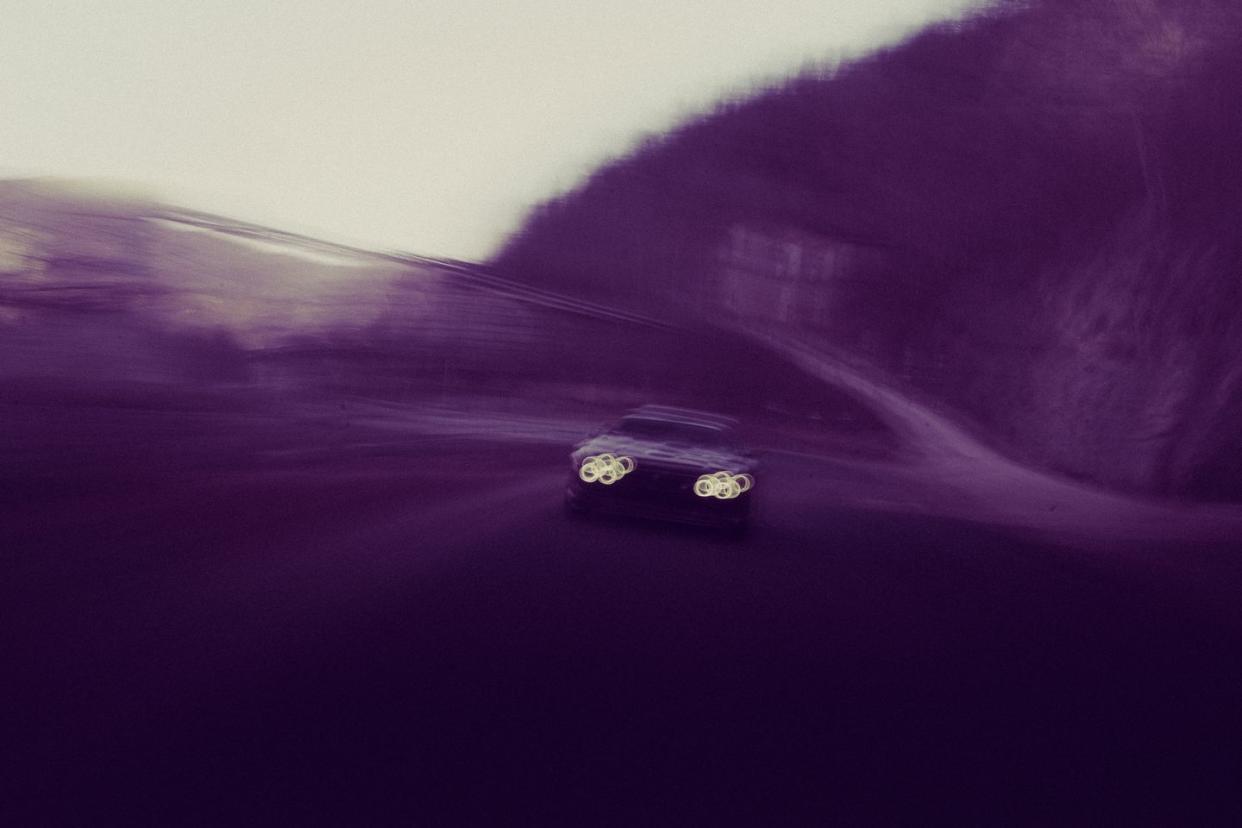
Adding an even more surreal dimension is the engine, which sounds and behaves as if it’s lifted from not just another time but another planet. But it smells like a highly tuned, super-boosted competition motor from the Eighties: Unburnt fuel, hot oil, and all manner of aromas swirl around. You could almost be in a rally service area in ’83 as the Martini Racing team rapidly preps its supercar for the stages, pouring in exotic, probably highly dangerous liquids. The Evo37 is knocking on the door of hypercar pricing, but it’s immediately apparent that this vehicle will appeal to a very different audience. The Evo37 certainly feels more special than pretty much any 1000-plus-hp cookie-cutter projectile you could care to mention. It sweats and spits and snorts and spews character.

The Kimera dances too. As noted, there’s more roll, squat, and dive than you’d experience in a modern supercar, but that creates feel and feedback; plus, the car is so light that it can afford to let its body breathe without floating out of control. There’s less outright grip than, say, a new 911 or Ferrari. However, the car is so progressive and responsive that herein lies the magic. It helps that the Evo37 is physically small and low. Hence, flinging the car around with abandon feels more natural than driving it precisely with fingertips. Really, though, it’s the way the driver can shift the car’s balance around with brakes and throttle that is special.
The Kimera tends toward a bit of understeer initially, but as soon as you learn to lift sharply or, even better, brake aggressively into the turn, the car comes alive. The rear axle is now in play. It slides wide predictably, and there’s no foreboding sense of a runaway pendulum. Just precision and the inescapable feeling that more gas about... now... will be a good thing. And it is. The Evo37 adopts lurid angles easily, and although you need confident throttle inputs to keep the car balanced, the chassis feels wonderfully indulgent.
The whole experience is urgent and overlaid with the wild, baffling, scary, and hilarious engine sounds that give it real edge. This isn’t a sort of Miata-in-the-wet, slow-motion, and no-jeopardy experience. But you wouldn’t want that, right? This is Group B tamed just enough for mere mortals to exploit. It’s an achievement almost as incredible as a lithe, elegant rear-drive rally car taking on the Audi Quattro through forests and on mountain passes in all weather and emerging victorious. The Evo37 has earned the right to share a spot on our list with the original 037. Kimera has written its own impossible story.

A car-lover’s community for ultimate access & unrivaled experiences.JOIN NOW
Hearst Owned
You Might Also Like
